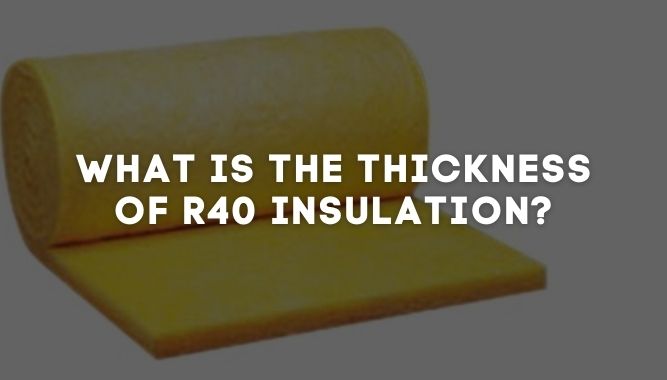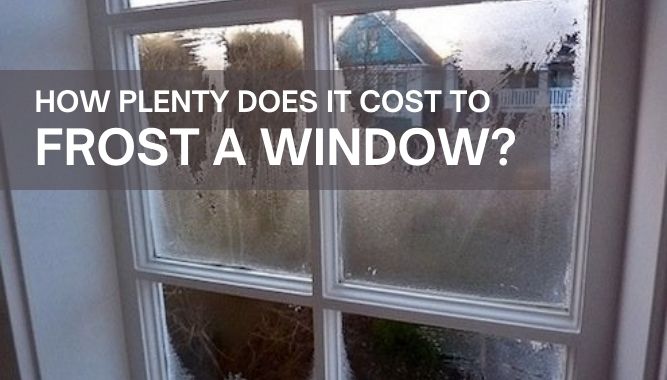The R-Value is the heat resistance through a certain amount of material, and that means that the greater the R-value is, the higher the insulation efficiency.
R-value is also dependent on the kind of insulation, its density, and thickness.
There are various types of insulation with R-values that depend on temperature, accumulation of moisture, and age.
For those looking to get the most of your insulation work and achieve the highest thermal efficiency for your home, it is essential to know the R values.
What Is the Thickness of R40 Insulation?
An R 40 insulation will have a thickness of 11.30 inches and fiberglass insulation with a 3.50 R-Value per inch.
PS – Ontario, CA, recently updated its building conduct rules and now only allows R50 to R80 for insulation materials.
R-40 Insulation – Thickness, Features, and Updates:
In the past, attic insulation blown-in in some places had a value of R-40, and the thickness was approximately 10 inches of cellulose and over 12 inches fiberglass blown-in.
It has since changed.
- For instance, According to the Ontario Building Code 2020-2021 and the experts, the recommended R-Value of attic insulation in Ontario ranges somewhere between R50 to R60.
- It needs 18 inches of blown-in cellulose and 22 inches of fiberglass.
- Ensuring your attic helps keep the indoor temperature steady and comfortable can also make it soundproof.
- Air sealing is crucial as air can exit through the numerous leaks in the attic.
- Alternatively, air may enter the attic from outside and contribute to heat loss.
- Insufficient insulation in the attic is the cause of 25 to 30 percent of the loss of heat.
- A higher R-Value indicates more insulated attics.
If you’ve already insulated your attic space, you can calculate the R-Value from looking over the kind of insulation you have:
- The Rock Wool appears to be real wool, and you can be able to find it in black, gray, and yellow colors. 2.8 * Insulation depth = R-Value
- Fiberglass It appears like loose fibers that have a white, light pink, or yellow hue, 2.5 * Insulation depth = R-Value
- Cellulose appears as small gray pieces of flat and grey fibers, 3.7 * Insulation depth = R-Value.
Best R-Values for Insulation:
One may not need a higher R-value for every house as we must be accustomed to the notion that there’s no “best R-value.
- You can find the rules for specific R-values in those of the Building Code.
- Different regions are divided into various “climate zones,” and each zone must have an R-value that is different for each zone determined by the climate.
- For instance, houses situated in extremely cold areas need an amount of R valued at 6.
- Houses situated in extremely hot climate zones will require an R-value of 3 or 4.
If your veiling is attic, the type of insulation is required to be more –
· Excellent insulation R 60 with Batt or Blown Insulation
· Improved Insulation R 70 with Batt or Blown Insulation
· The best insulation for R 80 with Batt or Blown Insulation
PS – Although an R-value of 7 is more efficient than three-valued R, if you live in a house situated in a hot climate, it’s wasteful and expensive to put in insulation with an R rating of 7.
The superior insulation value will be that best suited to your specific circumstances the best.
Spray Foam Insulations – The best way ahead:
Outside, heat enters your home during summer and then leaves your home during winter.
Air leakage is responsible for 40 percent of a home’s energy and loss of temperature.
- When you tighten your home, the insulation will last longer. And this is why spray foam insulation is superior to other kinds.
- It is also an eco-friendly alternative to others because it has a low proportion of VOCs (volatile organic compounds).
- And the fact that it doesn’t have any food value, it cannot allow the growth of bacterias or the growth of fungus.
- And this makes your home cleaner and healthier.
The insulation value of spray foam is determined with its R-value used to gauge how much resistance it has to heat discharge.
Spray foam insulation comes in two forms the closed and open cells.
- The Open Cell R-Value is approximately 3.5 for every inch.
- The value of a closed-cell can vary between 5.0 up to 7.0 for every inch.
In both kinds of spray foam insulation, the R-value may differ depending on the product type.
The thickness of Spray forms –
And this is contingent on a variety of aspects.
- The building code advises that the insulation levels be by the climate zone and the area of the structure covered with insulation.
- It is also essential to assess the level of permeability to the required moisture.
- These elements affect the value of R, and whether open or closed-cell foam insulation needs to be used.
Some other questions,
Related Questions and Frequently Asked Questions (FAQ):
Q1.) How many inches of the thickness of insulation can you see in R40?
Answer: 24inches by 48 inches on the Johns Manville R-40 Fiberglass Batt Insulation is the thickness of R-40.
Q2.) What is R-40 Insulation?
Answer: It is the thermal resistance of R-40, insulating and flexible wool whose make is fiberglass.
The products are manufactured in Canada and use more than 45% recycled materials.
Q3.) What is the thickness of r50 insulation?
Answer: Most conventional insulation needs a 15 inches thickness least for reaching the R-Value of 50.
On the other hand, Rich-E-Board can achieve this with just 1.5 inches thickness.
Q4.) What should be the ideal R-Value for four inches of insulation?
Answer: For all areas with around 3-4 inches of existing insulation levels, keep ready an R-value of 38-49.
Keep an R-value of 25-30 for insulation of floors.
Q5.) How thick should the R-value be for your Attic insulation?
Answer: We know that R-value refers to the insulation’s ability for resisting heat flow and the higher this value, the better is your thermal protection.
10 to 14-inches.
Q6.) What are some of the best R-values for insulation?
Answer: Some typical recommendations for all exterior walls are R-13 to R-23, and R-30 to R-49 are some of the most common values for ceilings and attic.
Q7.) Which is the highest R-Value for a 2×6 wall?
Answer: You can choose the value between R-19 to R-21. For blown/ spray/ or cellulose type, use an R-30 for your 2×6 walls.
Q8.) How thick is the R-30 for ceiling insulation?
Answer: The R-30 fiberglass insulation is ten inches thick and before buying any insulation for your houses, make sure to measure the joint spacing you are working with.
Q9.) How much is the thickness of an r19 fiberglass?
Answer: An R19 fiberglass comes with a thickness of 6.25″ thick, and if one puts it in a closed 2 x 6 wall, you can easily compress it by 0.75″ or more.
In simple words, you are getting R-18 for an R-19 enclosed within a cavity.
Q10.) What is the thickness of an R 38 insulation?
Answer: 12.75″ is the thickness of an R 38, and Bags/ 1000 Sq. Ft. is 16.8.
R-49 has a thickness of 16.25″ and R 30 at 10.25″.
Q11.) How can we calculate the insulation for a ceiling?
Answer: Begin by multiplying the wall length and wall height, and in the meantime, don’t skip to note the spacing of studs for easy determination of insulation.
Q12.) How much insulation rating is ideal for a six-inch wall?
Answer: The fiberglass blankets can easily provide an R-value of up to 3.2 per inch, which means a six-inch fiberglass batt can easily be achieved 19.2 of R-value.
R-21 can suit here as well.
Q13.) What is the use of R14 insulation?
Answer: R14 comfort batt has utility applications for insulating exterior walls, cathedral ceilings, basement walls, and some heated crawl spaces.
Q14.) What is the R-value for a three inches fiberglass insulation?
Answer: 2.2 to 4.0 / inch of thickness.
Consider a wall with a 3 ½ batting, which means it shows an R-value of more than 14.
Q15.) How much thick a spray foam insulation should likely be?
Answer: Smart question, as per michiganretrofoamz, make sure you use six to ten inches thickness in the ceiling or three inches in the wall.
Q16.) What is R 28 insulation?
Answer: R28 kind of insulation helps in boosting energy efficiency by reducing any workload for ventilation systems.
They suit well all kinds of attic or wood framing applications.
Q17.) Does the thicker insulation work any better?
Answer: Insulation is directly proportional to the R-Value, such as doubling the insulation thickness will also double the heat retention rate.
So, yes, thicker insulation will give more heat during the winters.
Q18.) How much do we need to spend for a 1500 sq ft attic?
Answer: The average costing runs from $1 sq ft to $5 easily, and for your 1500 sq feet attic, be prepared to spend $1,750 to $7,100 + easily.
Final Verdict:
You may be thinking, what is an important distinction between R40 or R50 and R60 insulation?
Adding more insulation in your home improves the R-value and your resistance to the flow of heat.
The amount of insulation or R-value you require will depend on your climate and the cooling system you use, the type of heating, and the specific area of your house that you wish to insulate.
For instance, the colder climate will require greater R-values than those in a warmer climate.
The R-value is required to achieve your particular property and how they function.
Thanks For Reading!

